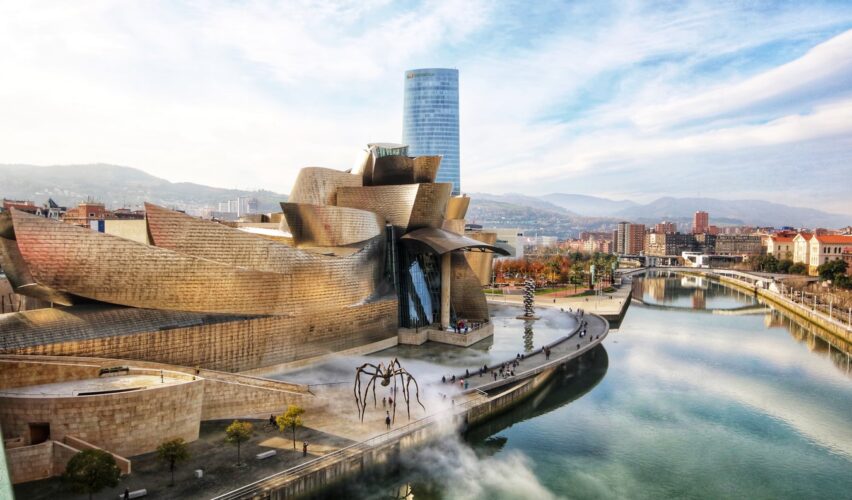“The art of city making”, by Charles Landry, is a brilliant attempt to understand cities with the declared and simple objective of making them better. In its pages, the reader should not expect to find a step-by-step recipe of how to make cities from scratch. The book is targeted at those readers concerned, instead, with reconfiguring existing cities so they can fulfill their role of solution providers for its own people and, ultimately, for the world.
In an increasingly urbanized planet, understanding cities has never been so high in the agenda. Cities are the result of a multiplicity of relationships, flows, interests, layers, forces, all intertwined in intricate networks where phenomena from a variety of domains like psychology, physics, sociology, culture, politics, or biology combine to make every city unique.
Instead of giving closed guidelines, Landry, a well recognized sociologist and urban thinker, paints a high-resolution picture of the variety of aspects and disciplines involved in city making. The mindful reader, whether politician, civic activist, city official or industry manager, will appreciate Landry’s patient and thorough dissection of all layers of his or her multi-faceted task. He or she might as well get comforted by his sincerity in highlighting the absence of shortcuts or predictable outcomes, stimulated by the writer’s recognition of city making as a sort of craftsmanship, and moved by the author’s definition of this job, in short, as an art.
For example, there is a fundamental misunderstanding between technology companies and reality when it comes to developing smart city initiatives: the former believe that cities should operate under a rather simple business logic, while cities, as probably our most complex creations, do not follow linear rules. Besides, every city has its own set of blurry contour conditions. What functions perfectly well in London, might not be appropriate for Rome.
‘Smart city’ industry is not alone these days into the divide between intentions and reality. In Spain, the discourse of the so-called “Mayors for Change” (the mayors that, four years after the 15-M movement, took office in principal Spanish cities), distilled the notion that running a city was mainly an act of good will. According to this idea, for example, asking the banks for better financial conditions would suffice to alleviate the municipal debt, or keeping a close eye on the execution of contracts would naturally improve the quality of city services, or opening new internal participatory tools would swiftly increase public servants’ productivity. The recent struggles of Madrid’s new Mayor Manuela Carmena against traffic jams illustrate this misalignment.
Both industry and these new “corporations for change” share a certain sentiment of perplexity and frustration about cities. In our democratic societies, technical top-down decisions confront with a dense and informed network of civic resistance. On the other side, bottom-up activism needs a deeper comprehension of how city economics function, both at macro and micro scales, if they want to turn their good intentions into visible changes.
Charles Landry early identifies the source that should fuel, at this stage, urban changes: social capital. Which as he states “is not depleted by its use, but in fact grows by use and is depleted by non-use”. But, having himself a sociologist background, he does not forget the possibilities that non-fossil fuel like big data can offer to the contemporary city makers, advocating for an integrated analysis of various data sources, since “economic, environmental, social and cultural data are looked at in isolation and rarely in terms of mutual impacts upon each other”. But innovation goes well beyond technology. Landry stresses the link between risk and creativity, and the impossible mission of pursuing creativity without encouraging risk. Under this paradox, old time solid rock professions like urban planning will have to incorporate liquid skills and cast a more transversal vision upon cities.
Landry, an experienced urban consultant, alerts against leaving artistic thinking aside when accomplishing “serious” projects in cities, not only because emotions are also part of our reasoning but because art provides unexpected paths into problem solving. His ideas reinforce our professional bet for projects like “Etopia. Center for Arts and Technology”, launched in 2013 to boost “innovation, creativity and entrepreneurship in the digital city”. Like us, the reader will find along the book multiple references to the reality of his or her work. Chapter 6 “The city as a living work of art” is specially compelling at this point, since it depicts a city in stagnation that deeply needs to define a new path. “What’s next?” is what Landry asks to cities, like many European cities, that after having experienced the real estate boom over the last decades and a sudden crash over the last few years, find themselves at a loss.
We feel that our city, Zaragoza, is part of those cities that need to define its “what’s next?”. With increasing difficulties to attract external talent (in fact, population is slowly declining), middle size cities like ours might try to do things differently. A dumb city is the one that “repeats past mistakes”, while a learning city “reflects upon itself, learns from failure and its strategic; the city is a learning field”. The law that talent attracts talent is well known phenomena in the urban milieu, so, as a first step to thrive again, cities should reconsider investing primarily on local people and home grown talent.
We have been reading recently about two different approaches towards the common goal of grasping the secret mechanisms of cities. Michael Batty’s “New science of cities” is an attempt to unveil the laws that govern urban complexity, while Charles Landry’s “The art of city making” is a treaty that recognizes complexity and proposes clever and realistic ways to deal with it. They are not opposed views of cities, but complementary. The attentive reader will savor both Landry’s humanist landscape and Batty’s intricate mathematical formulas, and will reckon them as remarkable efforts to put cities, once and for all, at the service of their inventors: us, humans.












